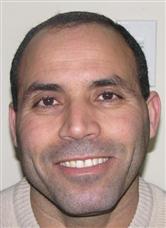by Prof. Graham Hudson
Source: The Agenda - TVO.org Website
URL: [link]
Date: November 27, 2014
On May 14, 2014, the Supreme Court of Canada upheld the constitutionality of the Canadian security certificate regime in Canada (Citizenship and Immigration) v. Harkat. In existence since 1978, security certificates have been a focal point for human rights advocates concerned with the growing size and reach of Canada’s national security apparatus. The decision is a turning point in the use of secret evidence in Canada.
Certificates enable the government to arrest and detain individuals on the grounds that such persons pose a threat to national security, have violated international (human rights) law, or have engaged in serious or organized criminal activity. Evidence supporting these allegations is collected, in large part, by the Canadian Security Intelligence Service (CSIS), and includes sensitive information that cannot be disclosed to anyone lacking high-level security clearance – including the person named in the certificate and his/her counsel. Among those permitted to view the evidence in secret hearings are a small group of “designated” Federal Court judges. If a judge finds that there is a reasonable basis for the allegations, the named person is subject to deportation from Canada.
The critical issue for many is whether the use of secret evidence violates human rights and the rule of law. In 2007, the Supreme Court decided it did. The Court ruled that, while full disclosure is not constitutionally required, Parliament had to find a better way of ensuring that the reliability, sufficiency, relevance, and sensitivity of evidence be subject to more rigorous adversarial challenge. Parliament responded in 2008 by providing security-clearance to “Special Advocates," who were empowered to represent named persons and assist Federal Court judges during secret hearings.
The adequacy of this new Special Advocate system was the central issue in the Harkat case. The Court decided that parliament's improvements brought the regime into line with the Charter, but only if named persons receive an “incompressible minimum amount of disclosure” and Special Advocates receive the materials and resources needed to perform their statutory roles. It instructed the Federal Court to be vigilant in ensuring that these standards be met on a case-by-case basis. This approach places a great deal of responsibility on a small group of judges and lawyers.
The Supreme Court also upheld the finding of a Federal Court judge that the certificate issued against Mohamed Harkat is reasonable. So what happens next?
As with all men subject to a certificate post-9/11, Harkat claims he would be subject to torture or similar abuse if returned to his home country of Algeria. In the 2002 case of Suresh v. Canada (Minister of Citizenship and Immigration), the Supreme Court ruled that Canada is generally prohibited from deporting someone to face the substantial risk of torture or similar abuse. Derogating from Canada’s international legal obligations, the Court qualified this general prohibition by allowing for deportation to torture in “exceptional circumstances.”
One would think that, if ever there were an exceptional circumstance, it would pertain to something as serious as a security certificate. There is no precedent, however. Strictly speaking, there has not been a single case in which the government has successfully invoked the Suresh exception. In fact, courts have directly or indirectly rejected invocations of the Suresh exception in certificate cases involving Hassan Almrei, Mohammad Zeki Mahjoub, and Mahmoud Jaballah.
There are, however, good reasons to believe that deportation to torture has nonetheless occurred under the radar in deportation proceedings unconnected to certificates. In three cases – involving Mostafa Dadar, Bachan Singh Sogi, and Jama Warsame — Canada deported persons despite the fact that the UN Committee Against Torture decided that each of these men faced a substantial risk of torture. Warsame was to be returned to Somalia, even though he was born in Egypt and had lived in Canada since the age of 4. Tellingly, he was subsequently able to secure protection in the Netherlands.
Similarly, some of those alleged to have organized human smuggling aboard the MV Sun Sea were deported, despite there being a substantial risk of torture. Reports indicate that one of these men, Sathyapavan "Sathi" Aseervatham, was detained and tortured upon his return to Sri Lanka.
Unlike certificates, the procedures through which determinations of risk of torture are made have not been subject to rigorous judicial scrutiny. Persons who have been found inadmissible to Canada on the grounds of security undergo a three-step process.
An immigration official (IO) will conduct a Pre-Removal Risk Assessment (PRRA) to determine whether the individual faces a substantial risk of torture or similar abuse.
A security and intelligence analyst in the Canadian Border Services Agency will file a threat assessment.
A Ministerial Delegate (MD) will review these reports. If s/he decides there is a risk of torture, but an even greater threat to Canadian security, s/he may invoke the Suresh exception by issuing a “danger opinion." The affected person is not provided an oral hearing nor may s/he see classified evidence included in the reports.
National security has a tendency to politicize decisions of this nature. In several cases, an MD has ignored objective evidence of torture included in PRRA assessments. In a case involving Arshad Muhammad, an MD met with the Director General of Border Operations of CBSA, Glenda Lavergne, before issuing her decision to deport Muhammad. Fortunately, the Federal Court intervened, finding that the MD’s decision was unsupported by the factual record. In most cases, persons in Muhammad’s place lack the financial capacity to challenge these sorts of decisions, and may be deported before a court has a chance to intervene.
Importantly, none of these cases involved a person named in a certificate. While certificates undoubtedly raise important constitutional and moral issues, they are but one, decidedly small part of a larger assemblage of practices through which Canada screens, detains, and deports asylum seekers. As Harkat moves through the removal process, the Supreme Court may have occasion to reconsider the constitutionality of deportation to torture. This is urgent, given revelations concerning Canada’s role in the torture of Maher Arar and others.
In my view, a new approach must include assurances that decisions about the removal of security risks be based on law and the facts, be less subject to political interference, include greater disclosure or Special Advocates, and be subject to independent review. The gains made in the certificate regime will count for little, unless we also improve the ways in which decisions about deportation to torture are made.
Graham Hudson, associate professor and undergraduate program director for the Department of Criminology at Ryerson University, is appearing on The Agenda Thursday to discuss Canada's use of security certificates to detain suspected terrorists. Here, he expresses concerns about whether some Canadians deported as security risks have faced torture.
Copyright © 2014 The Ontario Educational Communications Authority (TVO)
Change.org Petition
Follow Us
Search Justice for Mohamed Harkat
Navigation
Mohamed Harkat
Click on the photo of Mohamed to see all items related to him.

JUNE 2017: Mohamed Harkat once again faces deportation to his native Algeria after the Supreme Court of Canada declared the federal government’s security certificate regime constitutional. This fight is not over. The Justice for Mohamed Harkat Committee will re-double its efforts to see that justice is done for Mohamed Harkat and that the odious security certificate system of injustice is abolished once and for all.

JUNE 2017: Mohamed Harkat once again faces deportation to his native Algeria after the Supreme Court of Canada declared the federal government’s security certificate regime constitutional. This fight is not over. The Justice for Mohamed Harkat Committee will re-double its efforts to see that justice is done for Mohamed Harkat and that the odious security certificate system of injustice is abolished once and for all.
Statements of Support
Contact Us
RSS Feeds
Fair Use Disclaimer: This site contains copyrighted material the use of which
has not always been specifically authorized by the copyright owner.
Read the ENTIRE DISCLAIMER...
This Website is powered by the e107 content management system.








